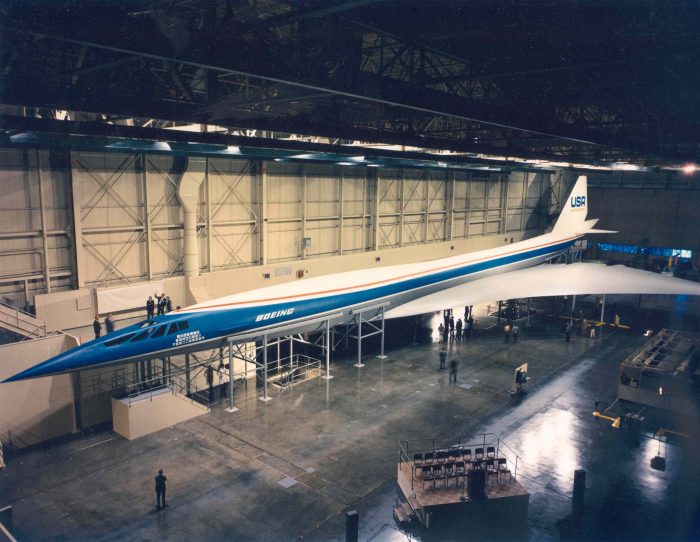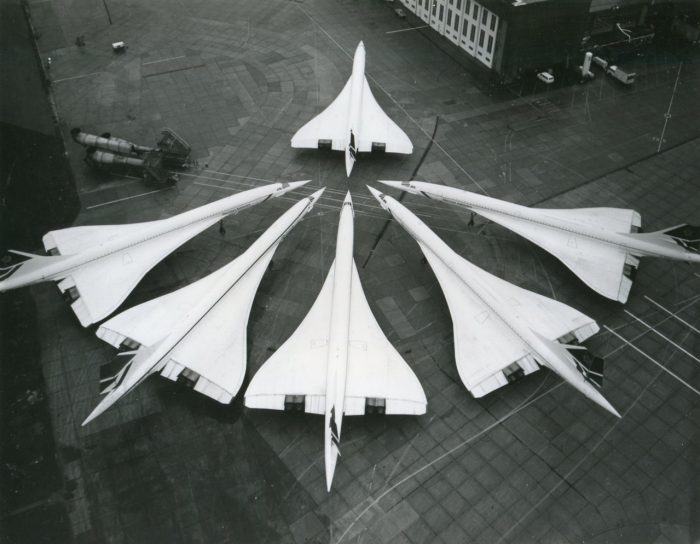
Is it bird, is it a plane? It’s a full size wooden model of Boeing’s SST. Unlike the Concorde, this bird never took flight.
The year was 1960. The jet age was in full swing. And governments and aircraft manufacturers were vying to be the first to offer commercial airline passengers supersonic travel.
The opportunity to fly passengers faster than the speed of sound was not lost on Qantas bosses at the time.
Our initial concept for a supersonic service on the Kangaroo Route had customers eating breakfast shortly after leaving Sydney and arriving at lunchtime in London, all on the same day.
Passengers would be in the air for just under 10 hours with short refuelling stops in Darwin, Singapore, Calcutta, Karachi and Cairo.
The entire journey would take 13 and a half hours, about 30 minutes faster than it takes to fly from Singapore to London today.
All achieved by flying at Mach 2.5 or twice the speed of sound.
British and French aircraft manufacturers joined forces to develop the famous Concorde.
Boeing also worked on its own version of the aircraft after winning an industry competition established by US President John F Kennedy.
In 1964 Qantas paid a $600,000 ($16 million in today’s money) deposit on six Boeing-manufactured supersonic SST aircraft. We also had options on four Concordes.
But lengthy design delays and a drop in commercial travel saw interest wane in supersonic travel.
And there was a lot of concern about the noise pollution created by aircraft travelling faster than the speed of sound – known as sonic boom.
That meant supersonic speeds would only be permitted over long stretches of water limiting the number of routes and city pairs where the aircraft could operate.

A flock of six Concordes: British Airways and Air France were the only airlines to offer regular supersonic services.
Boeing dropped the SST program and focused on turning an earlier concept of a large freighter aircraft into a new passenger plane creating the much loved 747.
With the introduction of the Jumbo and other bigger jets such as the Douglas DC-10 and Lockheed L-1011 TriStar, supersonic travel slipped off the agenda for American aircraft manufacturers. The focus was on reducing cost of travel through scale.
That left the field, or should we say sky, open to the Europeans. Ultimately 20 Concordes were manufactured with British Airways and Air France each operating seven with the others remaining as test aircraft.
And for Qantas? Well, we did end up with our own supersonic aircraft – a scale model of the Boeing SST – which is a very popular item in our heritage collection.
Even without going supersonic, the flying time between Australia and the rest of the world has shrunk. Newer models of the 747 meant we could cut refuelling stops en route to Europe and North America. Our new Perth-London flight has reduced the flying time ever further.
Project Sunrise aims to deliver non-stop flights between Sydney and London in the early 2020s, cutting flying time by up to four hours.
Read more Roo Tales here.